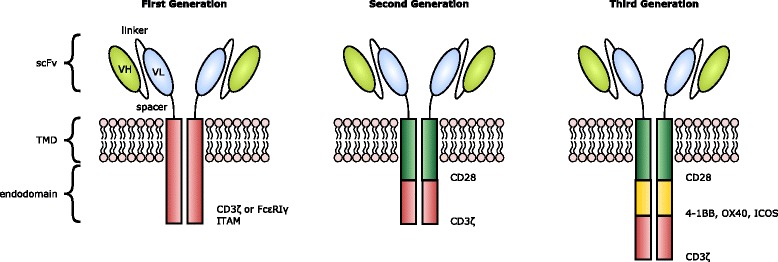Fig. 1.

CAR design. CARs exist as dimers and consist of an ectodomain (typically comprising an scFv for target binding joined to an extracellular spacer e.g. IgG1 CH2CH3); a transmembrane domain (TMD); and a signalling endodomain. CAR design has evolved from first generation constructs linking the scFV to a CD3ζ or FcεRIγ-derived immunoreceptor tyrosine-based activation motif (ITAM) to second and third generation constructs, where the CARs endodomain contains one or two or more additional costimulatory molecules (such as CD28, 4-1BB, ICOS or OX40) [37]. Fourth generation CAR T-cells (not illustrated) termed TRUCKs are further modified with a constitutive or inducible expression cassette for a transgenic protein (such as IL-12), which is released by the CAR T-cells following receptor binding [101]
